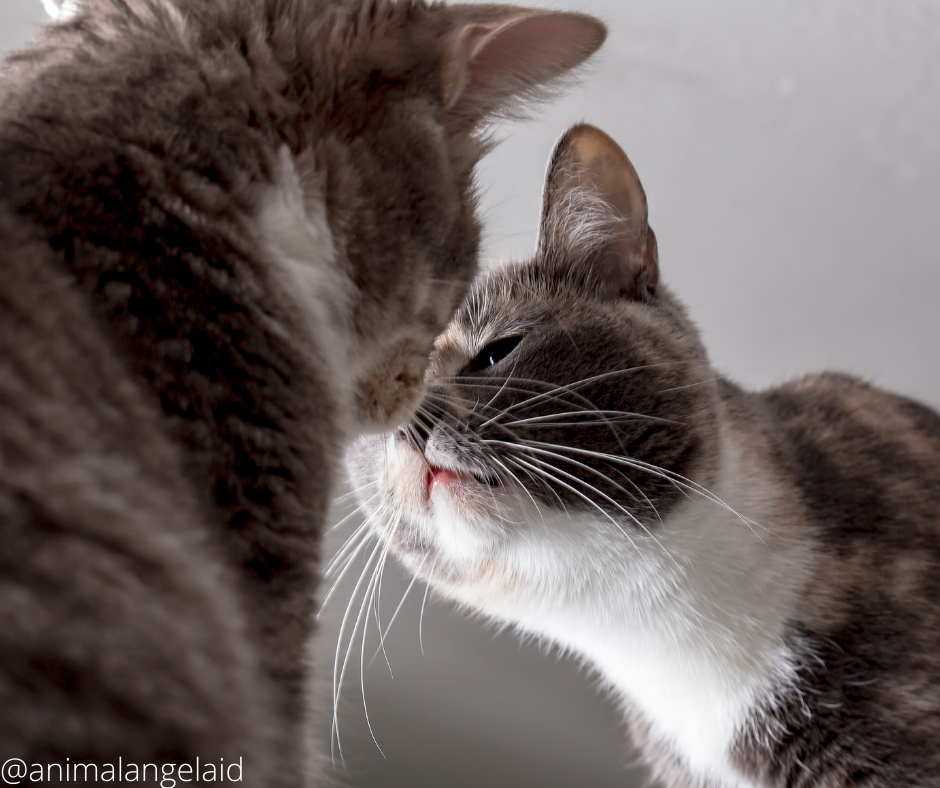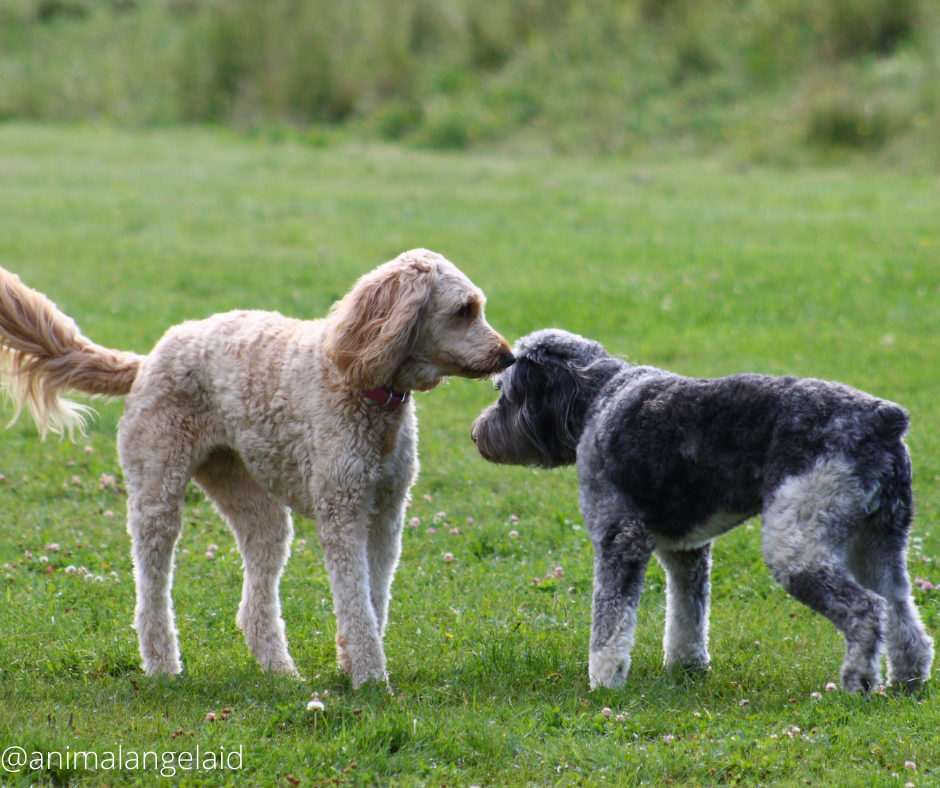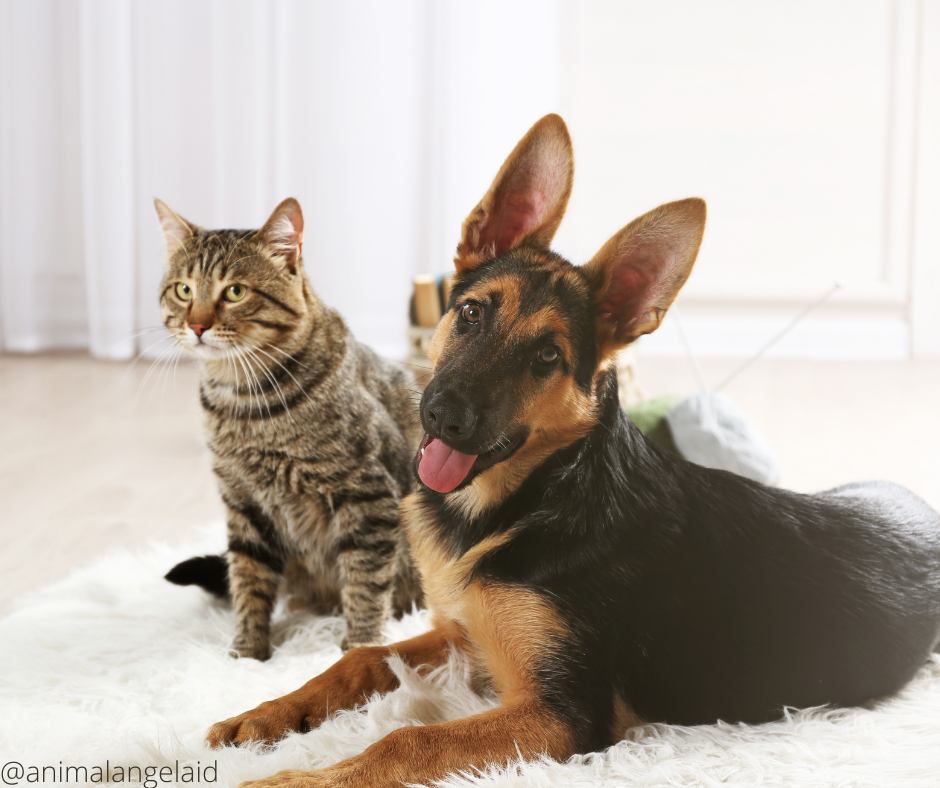
How exciting! You’ve made that heartfelt, sometimes big, decision to adopt or bring another furry face to your household. It’s a very happy time, but somewhere in the midst, you will probably find yourself asking silently (or out loud) “how are my current furballs going to get along with the new one(s)?” Like most things with animals, there’s often a learning curve. And that learning curve can change day to day? Where do they like to sleep? What are their communication habits? How are they in new environments?
Debbie Henry, founder of Animal Angel Aid, “Sometimes, despite all your research on bringing a new cat or dog into your home with a resident cat or dog, there can still the unanticipated or unexpected reactions. To help make the transition smoother for you, your family, your current fur-children and your new furry family members, we have created this blog with 31 tips to get started off on the right paw.”
Introducing a cat to a home with another cat(s):
There is no general scientific rule for what is the best combination of cats in a household. Everyone you ask will probably provide a different answer or opinion on whether males are better with females, males with males, females with females, adults with kittens or even kittens with kittens. What works best for you & your household, might not even be workable for another family. The key underlying factors are cat temperament, socialization and if there are known behavior considerations from the new or current pet. Just because either “fluffy” is super sweet on their own, doesn’t necessarily mean they are going to openly accept “fluffy #2”. This is often due to territory issues, improper introductions, and human tension when things don’t often go as planned. Good news though, it is certainly possible to acclimate cats of all ages to one another. Keep in mind that this introduction can take anywhere from days to weeks to months. The most important suggestion is to do the introduction slowly. Your ultimate goal is to prevent fearful and aggressive behavior amongst the cats. Your patience and understanding will help your cats adjust as well.

Here are a few tips on introducing a new cat to the household according to https://www.humanesociety.org/resources/introducing-pets
- As a rescue, one of the first things we recommend is to use hypo-allergenic pet wipes, maybe with a soft natural scent. Wipe all pets in the household down with the wipes. That way the playing field is even for scents.
- New cats coming out of foster or shelter situations in communal living will be bringing home the combined smells of all their former friends. Your current fluffy could be terrified after one smell of fluffy#2 who appears as a cat with multiple cat smells.
- Place the new cat or kitten in their own room. Make sure they have a supply of food, water, litter, scratching posts and toys. Make it feel like home for them, so they are comfortable.
- Feed the resident cat and the new cat on opposite sides of the door so they begin to associate positive actions with each other’s smells.
- Scent swapping is a great way to get each cat used to the other cat’s smells. You can either swap their blankets and beds or you can take a washcloth and rub it on the new cat and then place it by the food dish of the resident cat. This is another way to teach them to associate positive actions with the smell of the new friend.
- At this point, you can do a short switch of location. This means let the new cat roam around the home (one to two new rooms at a time). While this is happening, keep your resident cat in the private space that has been occupied by the new cat. Do this for a short period of time and then switch them back.
- Make sure you are spending quality time with both cats to make sure neither feels forgotten about.
- Now, you can slowly prop the door open ever so slightly so they can get a glimpse at each other face to face.
- When you let them interact for the first time, some hissing might happen. That is okay and normal. However, if you notice signs of upset and tension such as flattened ears, growling, spitting or crouching, separate them so they can be reassured that they are safe and secure by their humans. Do not pick them up or hold them during the introductions as you could get hurt should someone get frightened.
- Reward them with toys and treats for good behavior and also to distract them if they are becoming overstimulated or upset.
- Always remember that some cats will never be best friends but if you can get them to peacefully coexist, you have been successful.
Introducing a dog to a resident dog:
Introducing a new dog to a resident dog is very different from introducing a new cat to a resident cat. This takes different steps and a different approach. According to the Animal Humane Society, https://www.animalhumanesociety.org/adoption/introducing-new-pet-your-household
- The initial meet and greet should be in a neutral location for both dogs. Do not have it in your home. As with all animals, it is important that you let them meet each other slowly and do it very carefully. It is important to note that you should not just throw the two dogs together and let them figure it out on their own. That can backfire and put both dogs at risk.
- Make sure they are both on leashes for their initial meet. Keep them approximately 10 feet apart so they get a sense for one another but are not on top of one another. The space between them will reduce the tension.
- For future interactions during the introduction, it is important to still have a leash on, but you can leave it dragging so they can walk near each other. Let the two dogs briefly sniff one another and then call them away so that you end all meetings on a positive note.
- When it is time to bring your dog home and into your home, let them meet outside in your yard first. Let the resident dog in first and then bring the new dog inside. Keep this interaction short, sweet and positive. If you sense tension or upset, immediately separate them and start the interaction process over.
- Even once the introduction is done, it would be suggested to keep them in separate rooms or crates when you are not home to supervise.
- Make sure your new dog has their own new toys, bed, food bowls, etc. Your new dog probably already has a routine and their favorites. This will help eliminate any potential territorial disputes because Rover#2 wants Rover#1’s favorite sleeping spot or chew toy.
- Share the love. Make sure all furry children get equal love & attention, especially at the start. It’s important for each to feel they have their own special place in the family and are not threatened/intimidated by the new change.
- As always, reward good behavior!

Introducing a cat and dog:
When introducing a cat to a dog, you will find some similar suggestions as to acclimating cat to cat or dog to dog. The following tips will hopefully help create a lasting friendship between your pets.

- Make sure that your cat has access to a separate room that the dog does not have access to. Make sure the cat also has high areas they can jump to in case they need to escape the dog. This private room should be secure with a door, celling and have all of their necessary supplies.
- When introducing a new animal to the home, keep them apart for a few days. You will want to let them adjust to the sounds and smells of the new canine or feline friend before allowing them to meet face-to-face.
- Similar to introducing a cat to another cat, you should feed them on opposite sides of the doors, so they associate positivity with the scent of one another.
- It is important to try and teach your dogs some simple commands such as sit, down and come so you can stop any concerning behavior.
- When it comes time to introduce the pets, introduce them in a common area of the home. Make sure it is not one of their safe spaces. Those spaces should remain safe spaces for each pet.
- Initially, keep your dog on a leash so you have control over where the dog goes. Let the cat go around and walk around and sniff the dog.
- Do not restrain either pet in your arms as they can get startled and hurt you.
- Reward both pets for good, calm, positive behavior and actions.
- If you begin to sense tension or stress, try to calmly distract them with a toy or food and redirect their behavior to something else. At this point, put them back in their safe places.
- Do this activity daily and try to end each introduction session before either pet gets stressed or angry.
- When you are ready to let your dog be loose with the cat, keep the dog on a leash on the floor so if you needed to, you could grab the leash and separate them.
- Even after it is going well, you should keep the pets separated when you are not around to supervise the behaviors and interactions.
Most animals love to have the companionship of another animal and the transition is relatively smooth and quick. However, there are times when some animals find it more challenging to acclimate to their new furry family members, and cannot coexist as easily as you had originally hoped. At that point, a trained expert is what you need to help guide you down the path of peace. Have a conversation with your vet or an animal behaviorist/trainer. They will happily be able to shed some additional expert tips, and additional resources, that could help find a solution that works for you and your furry children. The ultimate goal is one big family cohabitating peacefully under one roof. Hopefully as furry best friends, but if not, then in a manner where tolerance and acceptance is just as golden.




0 Comments